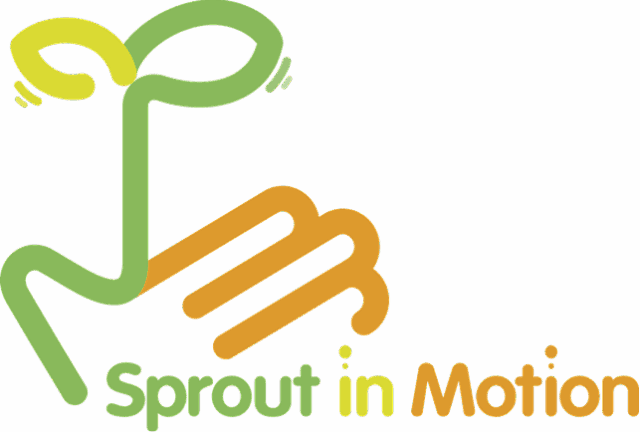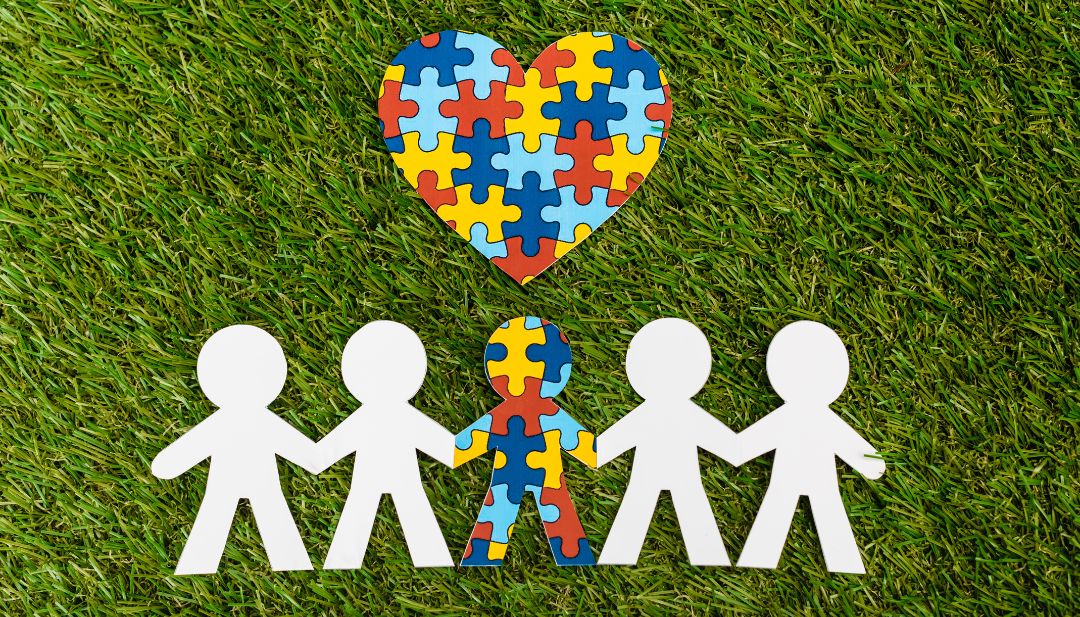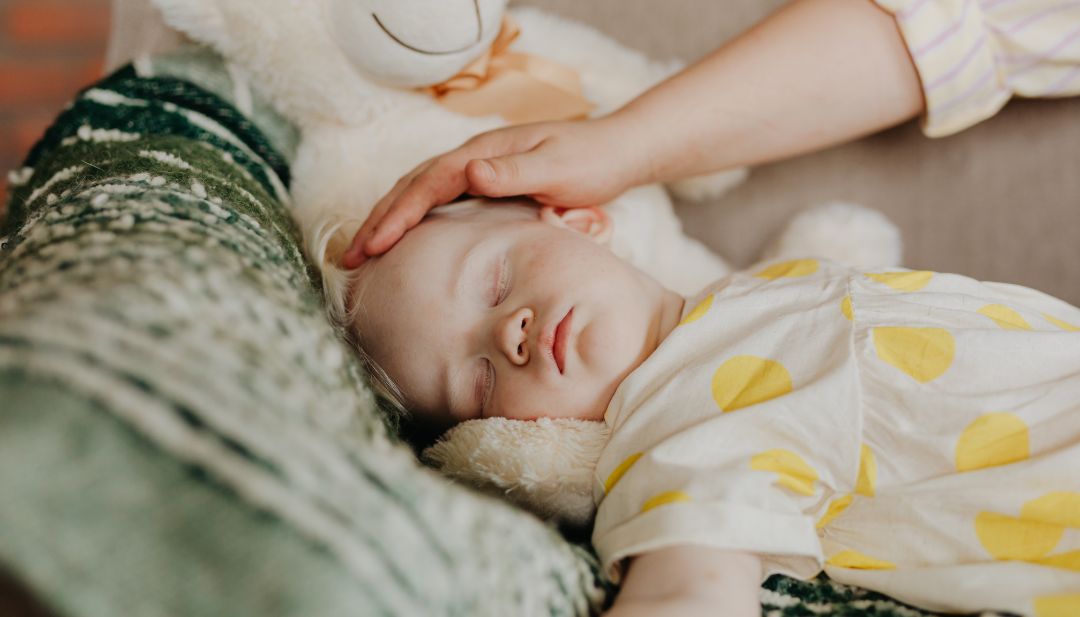Developmental Milestones
Every child grows at their own pace, but key developmental milestones help track progress in areas like movement, communication, social skills, and cognition. Early recognition of these milestones allows for timely support, ensuring children build a strong foundation for learning and daily life. At Sprout in Motion, we’re here to guide families through every stage of their child’s development.
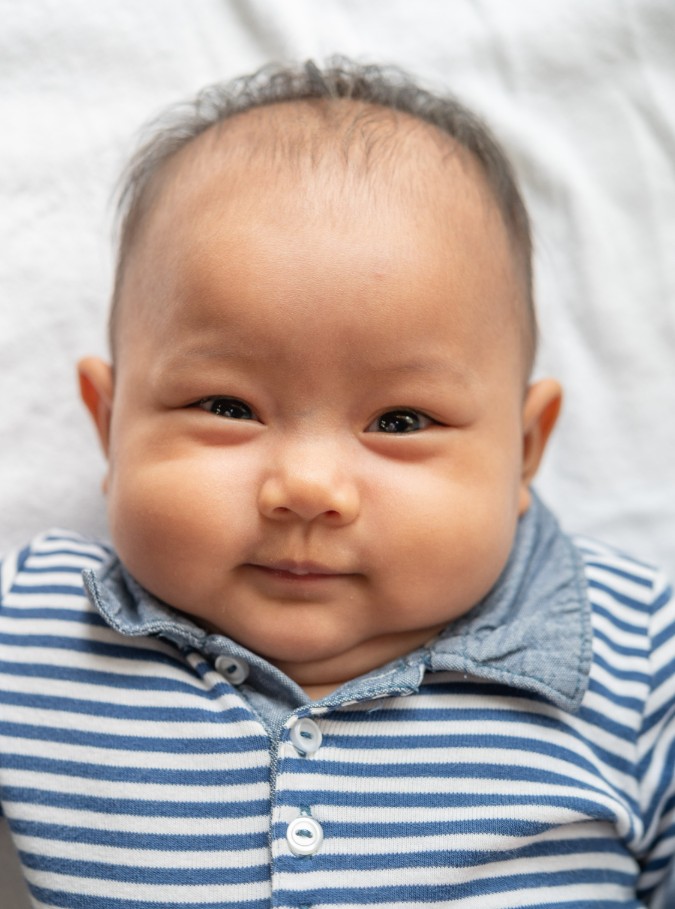

Social/Emotional Milestones
- Begins to smile responsively at people (social smile)
- Can briefly calm themselves (e.g., sucking on hands)
- Shows interest in faces and watches caregivers closely
- Starts to recognize and respond to familiar people
Language/Communication Milestones
- Makes cooing or gurgling sounds
- Turns head toward sounds, especially familiar voices
- Begins to make different cries for different needs (hunger, discomfort, etc.)
Cognitive (Thinking, Learning, Problem-Solving) Milestones
- Pays attention to faces and follows objects with eyes
- Begins to recognize people at a short distance
- Shows interest in high-contrast patterns and bright colors
- Starts to respond to sounds with movement or facial expressions
Movement/Physical Development Milestones
- Can hold head up briefly when on tummy
- Begins to push up on arms when lying on stomach
- Moves arms and legs more smoothly
- Opens hands more frequently and may try to grasp objects
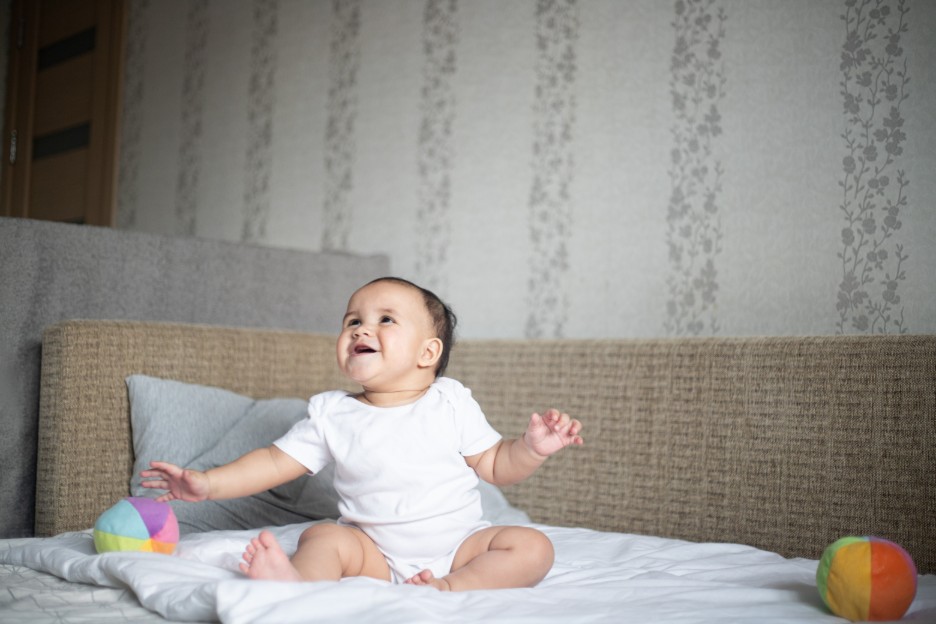
Social/Emotional Milestones
- Smiles spontaneously, especially at people
- Enjoys playing with caregivers and may cry when play stops
- Copies facial expressions, like smiling or frowning
- Recognizes familiar people and may show excitement
Language/Communication Milestones
- Begins to babble with a variety of sounds (e.g., “ah-goo”)
- Laughs or squeals in response to play or attention
- Turns head toward voices and sounds
- Expresses emotions through different cries and vocalizations
Cognitive (Thinking, Learning, Problem-Solving) Milestones
- Watches faces closely and follows moving objects smoothly with eyes
- Recognizes familiar people from a distance
- Reacts to the tone of voice, becoming excited or calm based on emotion
- Shows interest in objects and may try to reach for them
Movement/Physical Development Milestones
- Holds head steady when sitting with support
- Pushes up on elbows when on tummy
- Rolls from tummy to back (some babies may roll both ways)
- Reaches for toys and grabs objects with hands
- Brings hands to mouth and may begin exploring objects by mouthing them
- Kicks legs strongly and moves arms with more control
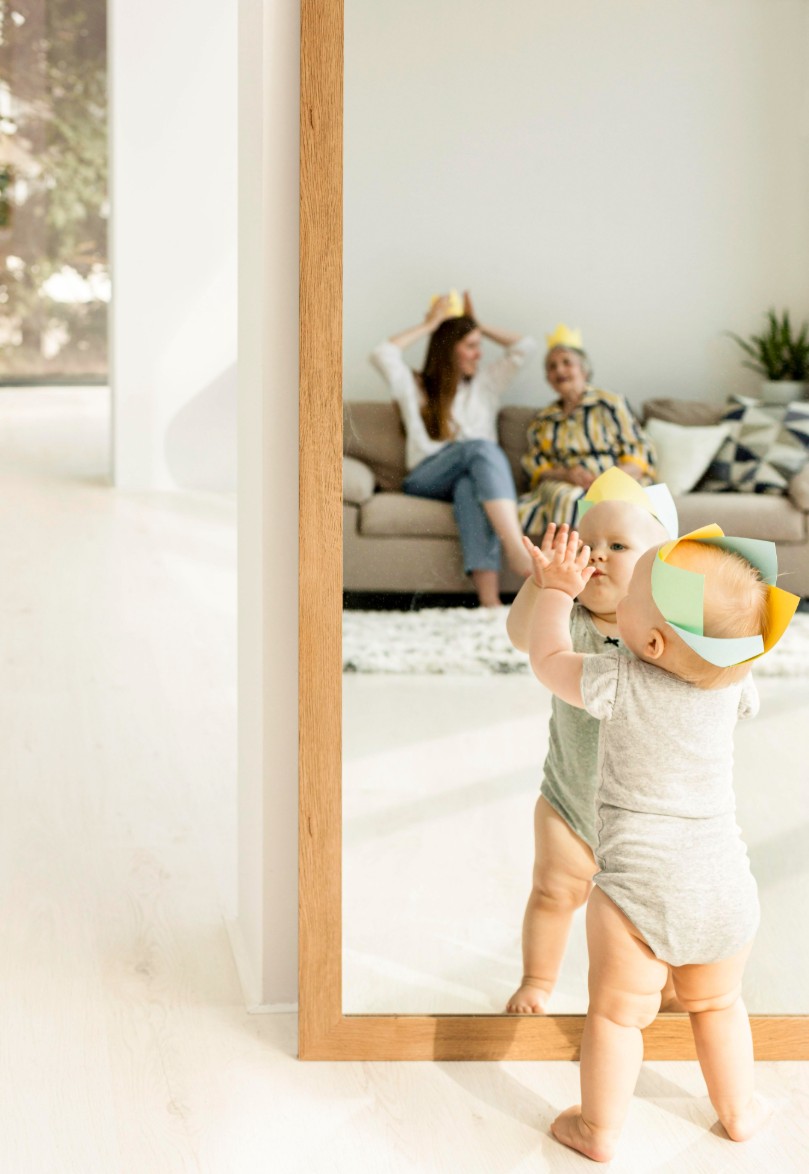
Social/Emotional Milestones
- Recognizes familiar faces and may show discomfort with strangers
- Enjoys playing with caregivers and responds to attention with laughter or smiles
- Expresses emotions more clearly (happy, upset, excited)
- Reacts to caregivers’ emotions (e.g., may cry if they see someone sad)
- Likes looking at themselves in a mirror
Language/Communication Milestones
- Responds to their name and familiar voices
- Makes a variety of sounds, including babbling (“ba,” “da,” “ma”)
- Takes turns making sounds in “conversations” with caregivers
- Expresses joy or displeasure through different vocal tones
- Starts to recognize and respond to simple words like “no” or “bye-bye”
Cognitive (Thinking, Learning, Problem-Solving) Milestones
- Looks at objects nearby and tries to reach for them
- Passes objects from one hand to the other
- Shows curiosity about objects and may try to explore them by shaking, banging, or mouthing them
- Notices things at a distance and follows moving objects smoothly
- Begins to understand cause and effect (e.g., dropping a toy to see what happens)
Movement/Physical Development Milestones
- Rolls over in both directions (tummy to back and back to tummy)
- Sits up with minimal support and may begin sitting independently
- Supports weight on legs when held in a standing position and may bounce
- Pushes up with straight arms when on tummy
- Grasps and holds objects, transferring them between hands
- Begins to use fingers to explore objects instead of just grasping with the palm
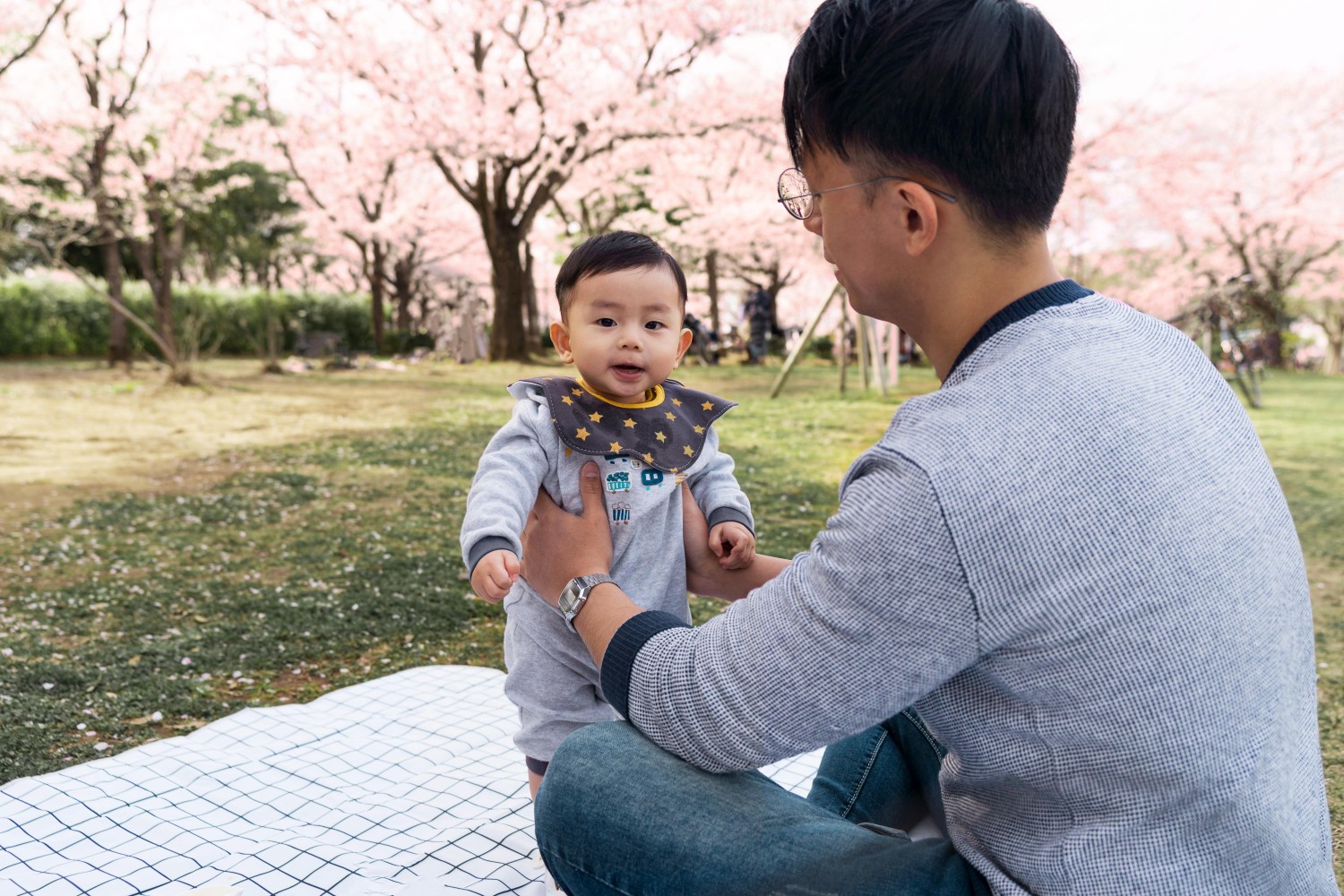
Social/Emotional Milestones
- May be shy or anxious around strangers (stranger anxiety)
- Shows clear attachment to familiar caregivers and may become upset when separated (separation anxiety)
- Has favorite toys and enjoys interactive games like peek-a-boo
- Uses facial expressions and sounds to show emotions, such as happiness or frustration
- Imitates gestures, such as clapping or waving
Language/Communication Milestones
- Responds to their name consistently
- Understands basic words like “no” and “bye-bye”
- Uses a variety of sounds, including “mamama” and “bababa”
- Begins to point or make gestures to communicate needs
- Copies sounds and speech patterns from caregivers
- Recognizes tone changes in voices (e.g., knowing when a caregiver sounds happy or firm)
Cognitive (Thinking, Learning, Problem-Solving) Milestones
- Looks for hidden objects (object permanence)
- Watches and learns from caregivers’ actions (e.g., trying to copy hand movements)
- Bangs, shakes, and throws objects to explore their functions
- Transfers objects from one hand to the other easily
- Uses fingers to pick up small objects (developing pincer grasp)
- Shows curiosity by looking around and reaching for new things
Movement/Physical Development Milestones
- Sits up without support and may get into a sitting position independently
- Starts crawling or moving in other ways (e.g., scooting, rolling)
- Pulls up to stand using furniture or caregivers’ hands
- Stands while holding onto furniture and may begin “cruising” along it
- Uses hands and fingers to grasp and manipulate small objects
- May start self-feeding with fingers
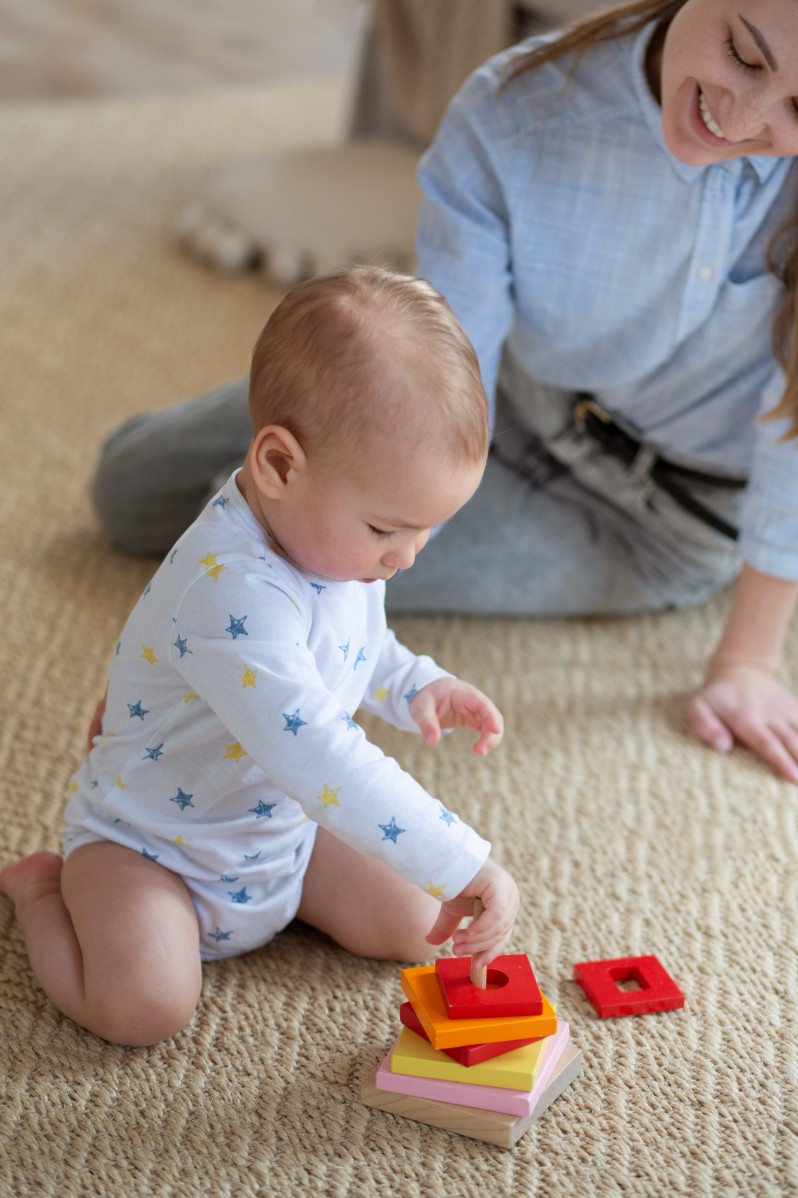
Social/Emotional Milestones
- Shows strong attachment to caregivers and may experience separation anxiety
- Plays simple interactive games like peek-a-boo and pat-a-cake
- Waves “bye-bye” or responds to simple social gestures
- Imitates behaviors, such as clapping or pretending to talk on the phone
- Expresses a range of emotions (happiness, frustration, shyness)
- Shows preference for certain people and toys
- Seeks comfort from familiar caregivers when upset
Language/Communication Milestones
- Says simple words like “mama,” “dada,” or other familiar names
- Understands and responds to basic requests like “come here” or “no”
- Babbles with tone variations that resemble speech patterns
- Uses gestures like pointing, reaching, or shaking head for “no”
- Tries to imitate simple words and sounds
- Recognizes names of common objects or family members
Cognitive (Thinking, Learning, Problem-Solving) Milestones
- Explores objects by shaking, banging, throwing, or dropping them
- Looks for hidden objects (understanding object permanence)
- Follows simple directions and routines
- Points to things of interest to show others
- Begins to use objects correctly (e.g., holding a cup, brushing hair)
- Enjoys putting objects in and out of containers
- Shows curiosity about how things work and may experiment with cause and effect
Movement/Physical Development Milestones
- Pulls up to stand and may start walking while holding onto furniture (cruising)
- May take a few independent steps or begin walking
- Crawls efficiently and moves in various ways (e.g., scooting, climbing)
- Uses pincer grasp (thumb and forefinger) to pick up small objects
- Can feed themselves small pieces of food using fingers
- Holds and attempts to drink from a cup with assistance
- Starts using hands to help with dressing, such as lifting arms for a shirt
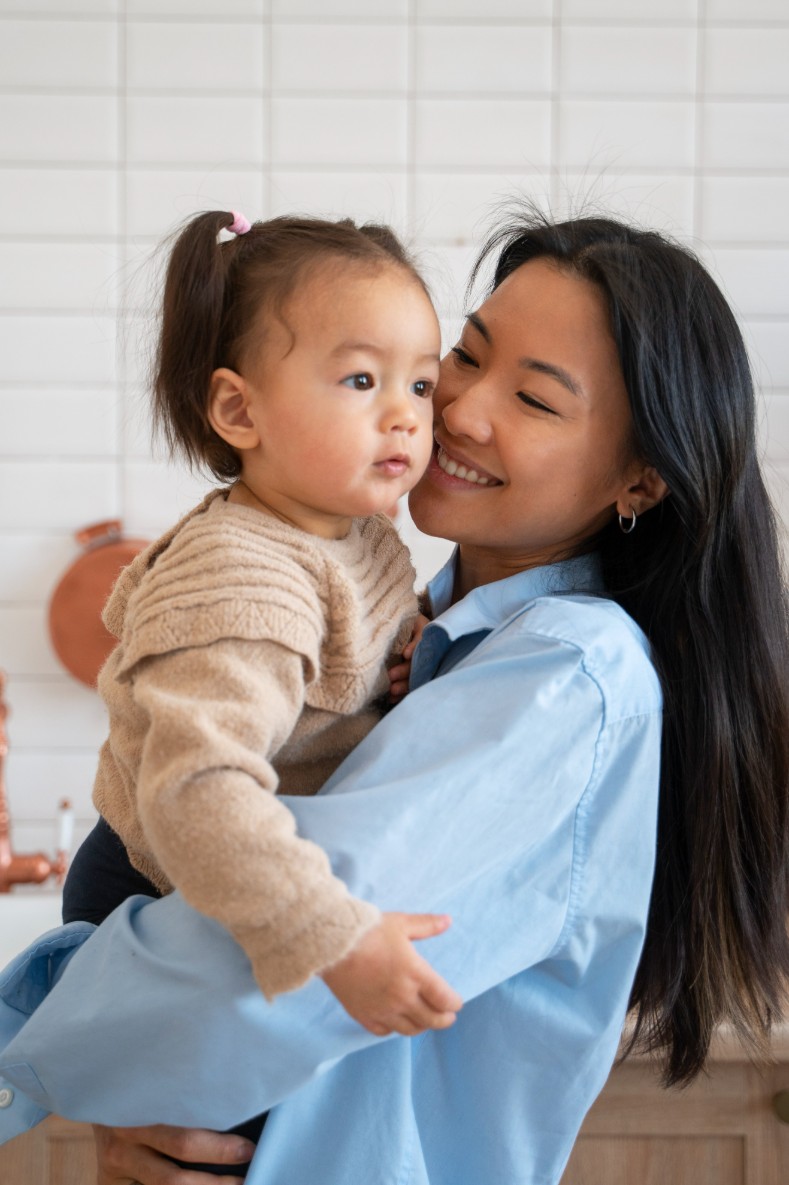
Social/Emotional Milestones
- Copies other children while playing, like taking toys out of a container when another child does
- Shows you an object she/he likes
- Claps when excited
- Hugs stuff doll or other toys
- Shows you affection (hugs, cuddles, or kisses you)
Language/Communication Milestones
- Tries to say one or two words besides “mama” or
- “dada,” like “ba” for ball or “da” for dog
- Looks at a familiar object when you name it
- Follows directions given with both a gesture and words. For example, he gives you a toy when you hold out your hand and say, “Give me the toy.”
- Points to ask for something or to get help
Cognitive (Thinking, Learning, Problem-Solving) Milestones
- Tries to use things the right way, like a phone, cup, or book
- Stacks at least two small objects, like blocks
Movement/Physical Development Milestones
- Takes a few steps on his own
- Uses fingers to feed herself some food
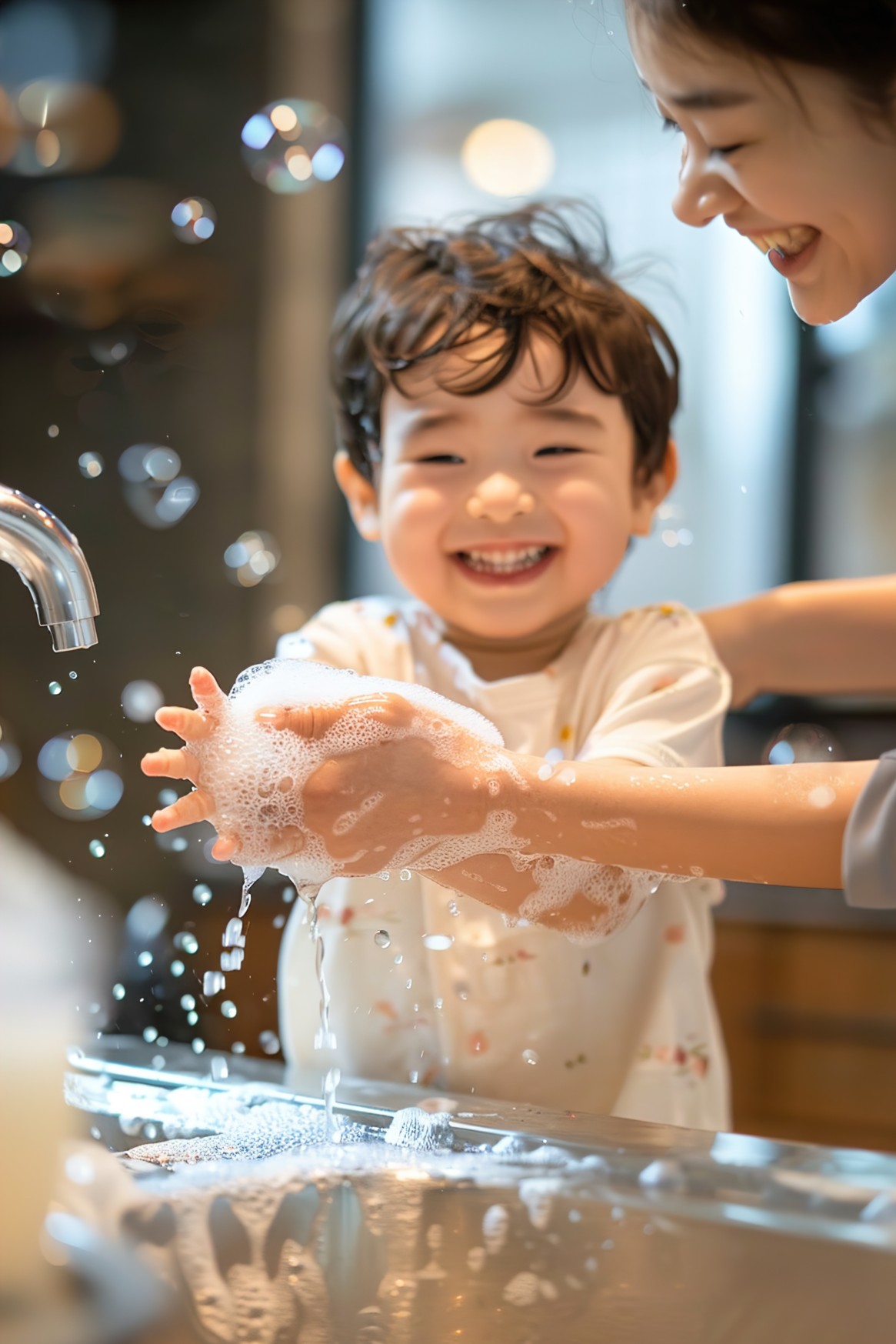
Social/Emotional Milestones
- Moves away from you, but looks to make sure you are close by
- Points to show you something interesting
- Puts hands out for you to wash them
- Looks at a few pages in a book with you
- Helps you dress him by pushing arm through sleeve or lifting up foot
Language/Communication Milestones
- Tries to say three or more words besides “mama” or “dada”
- Follows one-step directions without any gestures, like giving you the toy when you say, “Give it to me.”
Cognitive (Thinking, Learning, Problem-Solving) Milestones
- Copies you doing chores, like sweeping with a broom
- Plays with toys in a simple way, like pushing a toy car
Movement/Physical Development Milestones
- Walks without holding on to anyone or anything
- Scribbles
- Drinks from a cup without a lid and may spill sometimes
- Feeds herself with her fingers
- Tries to use a spoon
- Climbs on and off a couch or chair without help
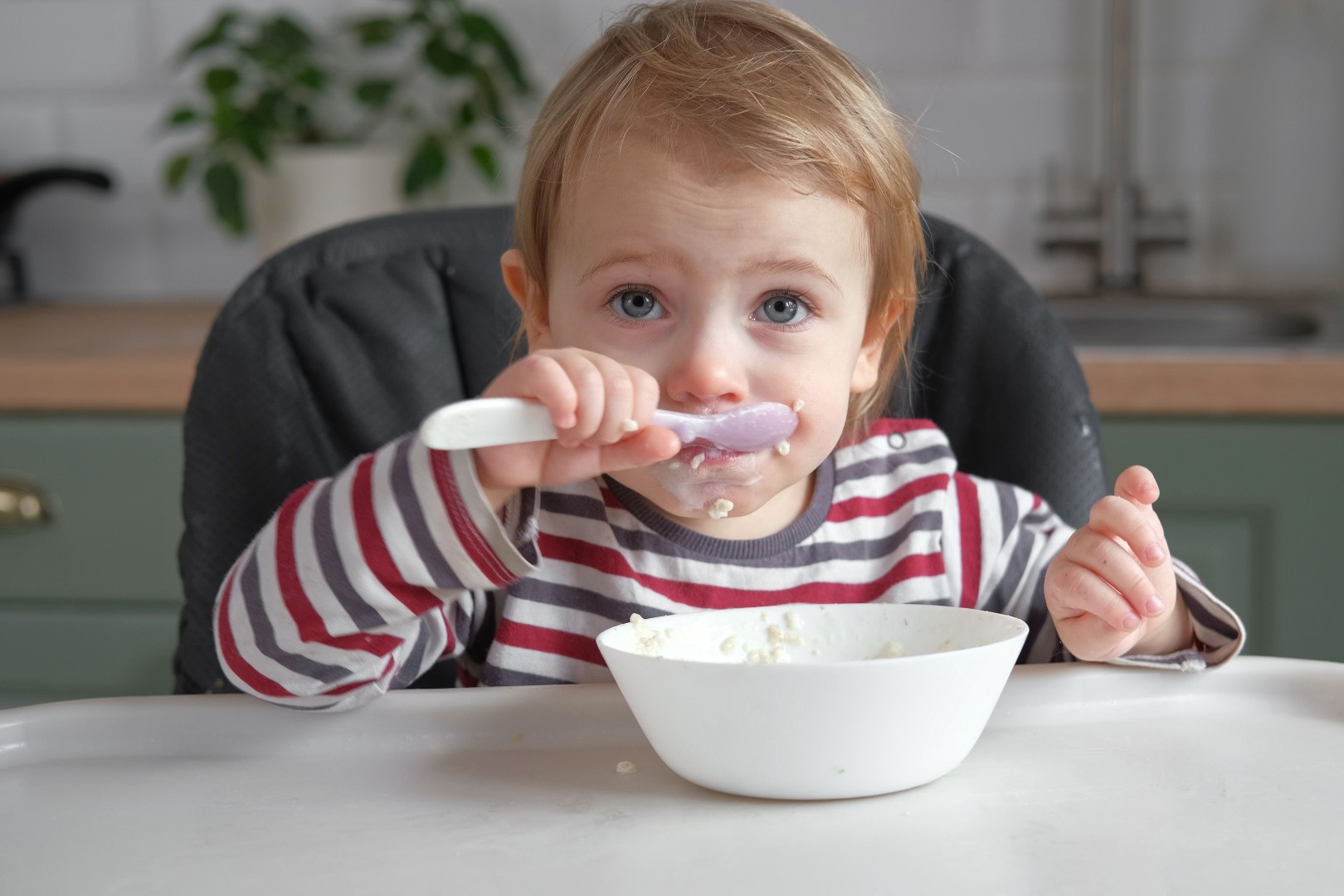
Social/Emotional Milestones
- Notices when others are hurt or upset, like pausing or looking sad when someone is crying
- Looks at your face to see how to react in a new situation
Language/Communication Milestones
- Points to things in a book when you ask, like “Where is the bear?”
- Says at least two words together, like “More milk.”
- Points to at least two body parts when you ask him to show you
- Uses more gestures than just waving and pointing, like blowing a kiss or nodding yes
Cognitive (Thinking, Learning, Problem-Solving) Milestones
- Holds something in one hand while using the other hand; for example, holding a container and taking the lid off
- Tries to use switches, knobs, or buttons on a toy
- Plays with more than one toy at the same time, like putting toy food on a toy plate
Movement/Physical Development Milestones
- Kicks a ball
- Runs
- Walks (not climb) up a few stairs with or without help
- Eats with a spoon
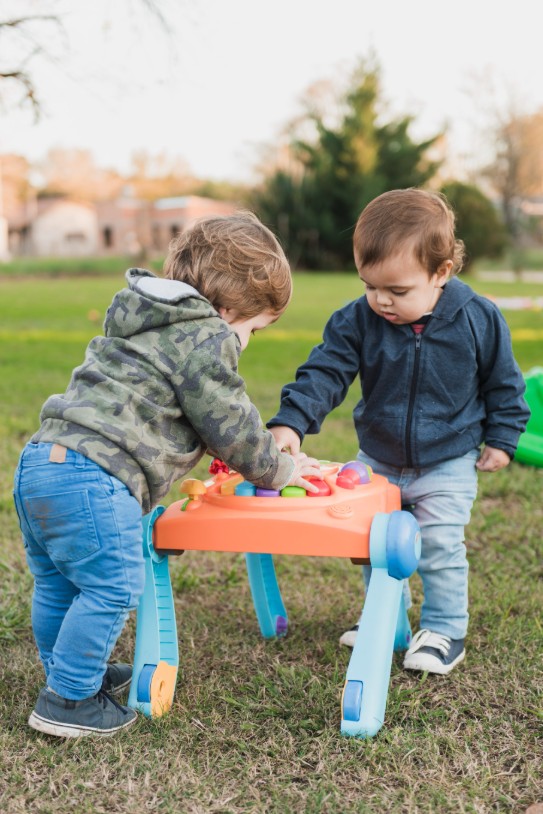
Social/Emotional Milestones
- Plays next to other children and sometimes plays with them
- Shows you what she can do by saying, “Look at me!”
- Follows simple routines when told, like helping to pick up toys when you say, “It’s clean-up time.”
Language/Communication Milestones
- Says about 50 words
- Says two or more words together, with one action word, like “Doggie run”
- Names things in a book when you point and ask, “What is this?”
- Says words like “I,” “me,” or “we”
Cognitive (Thinking, Learning, Problem-Solving) Milestones
- Uses things to pretend, like feeding a block to a doll as if it were food
- Shows simple problem-solving skills, like standing on a small stool to reach something
- Follows two-step instructions like “Put the toy down and close the door.”
- Shows he knows at least one color, like pointing to a red crayon when you ask, “Which one is red?”
Movement/Physical Development Milestones
- Uses hands to twist things, like turning doorknobs or unscrewing lids
- Takes some clothes off by himself, like loose pants or an open jacket
- Jumps off the ground with both feet
- Turns book pages, one at a time, when you read to her
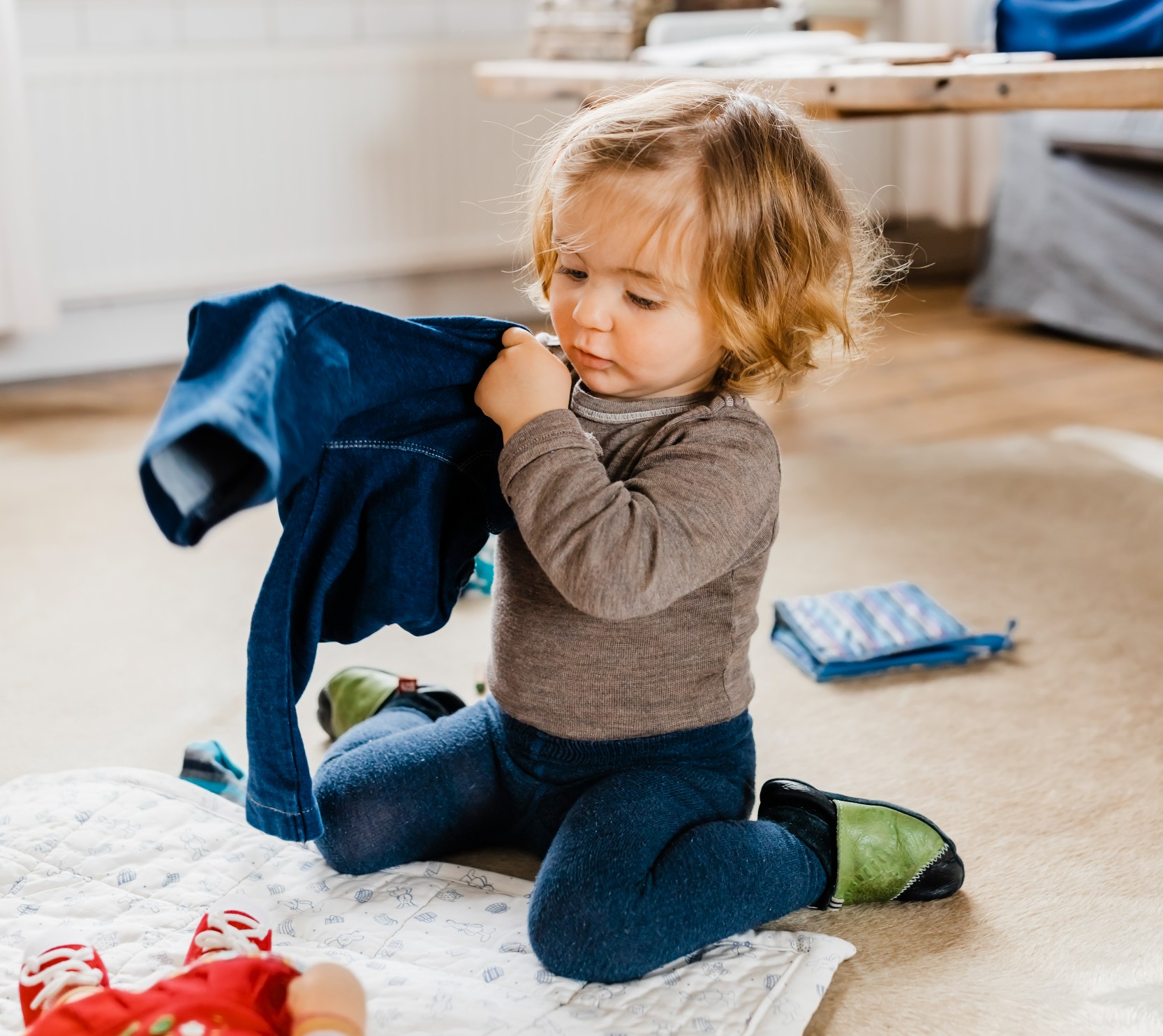
Social/Emotional Milestones
- Calms down within 10 minutes after you leave her, like at a childcare drop off
- Notices other children and joins them to play
Language/Communication Milestones
- Talks with you in conversation using at least two back-and-forth exchanges
- Asks “who,” “what,” “where,” or “why” questions, like “Where is mommy/daddy?”
- Says what action is happening in a picture or book when asked, like “running,” “eating,” or “playing”
- Says first name when asked
- Talks well enough for others to understand, most of the time
Cognitive (Thinking, Learning, Problem-Solving) Milestones
- Draws a circle, when you show him how
- Avoid touching hot objects, like a stove, when you warn her
Movement/Physical Development Milestones
- Uses a fork
- Strings items together, like large beads or macaroni
- Puts on some clothes by himself, like loose pants or a jacket
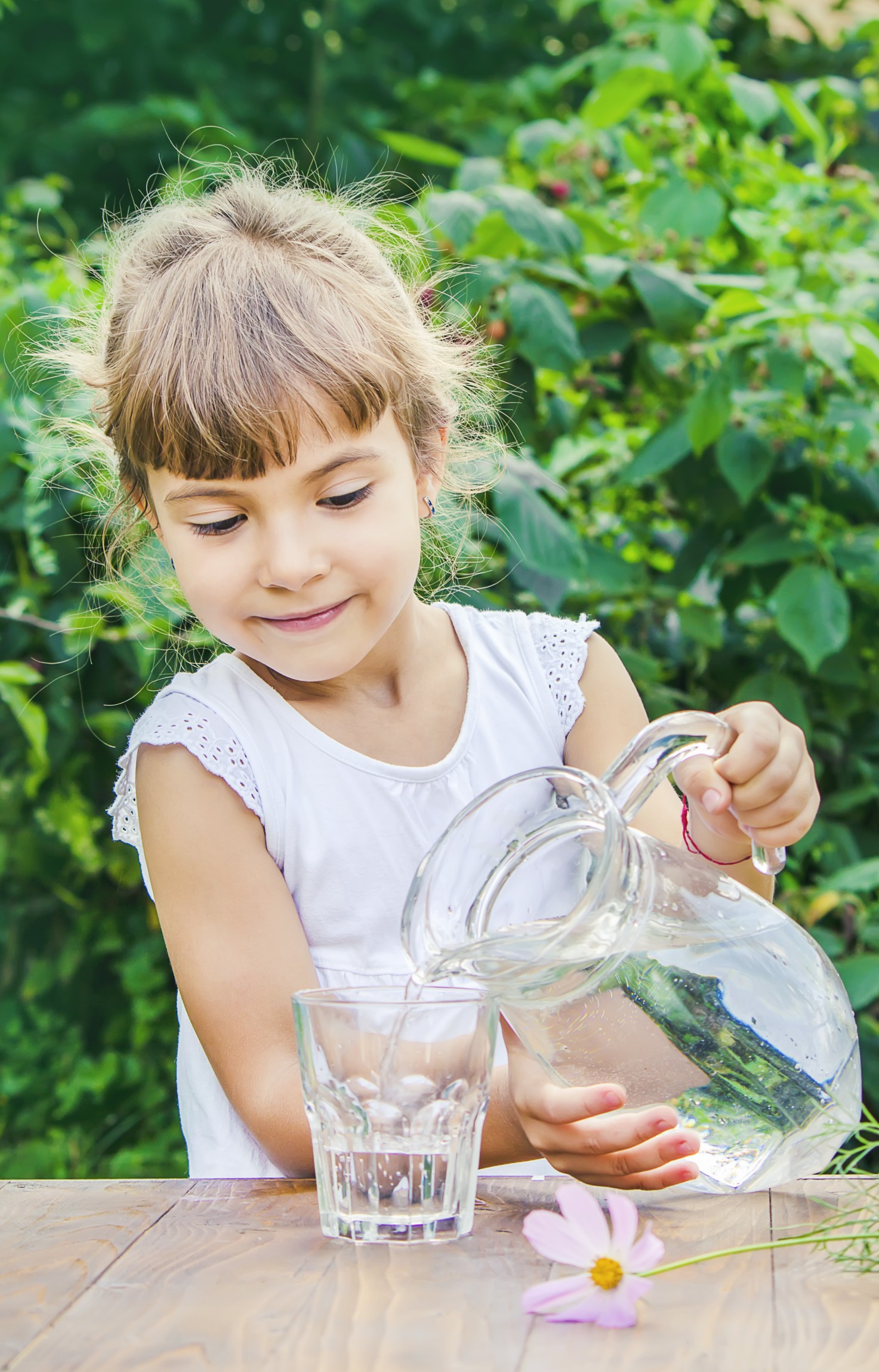
Social/Emotional Milestones
- Pretends to be something else during play (teacher, superhero, dog)
- Asks to go play with children if none are around, like “Can I play with Alex?”
- Comforts others who are hurt or sad, like hugging a crying friend
- Avoids danger, like not jumping from tall heights at the playground
- Likes to be a “helper”
- Changes behavior based on where she is (place of worship, library, playground)
Language/Communication Milestones
- Says sentences with four or more words
- Says some words from a song, story, or nursery rhyme
- Talk about at least one thing that happened during his day, like “I played soccer.”
- Answers simple questions like “What is a coat for?” or “What is a crayon for?”
Cognitive (Thinking, Learning, Problem-Solving) Milestones
- Names a few colors of items
- Tells what comes next in a well-known story
- Draws a person with three or more body parts
Movement/Physical Development Milestones
- Catches a large ball most of the time
- Serves himself food or pours water, with adult supervision
- Unbuttons some buttons
- Holds crayon or pencil between fingers and thumb (not a list)
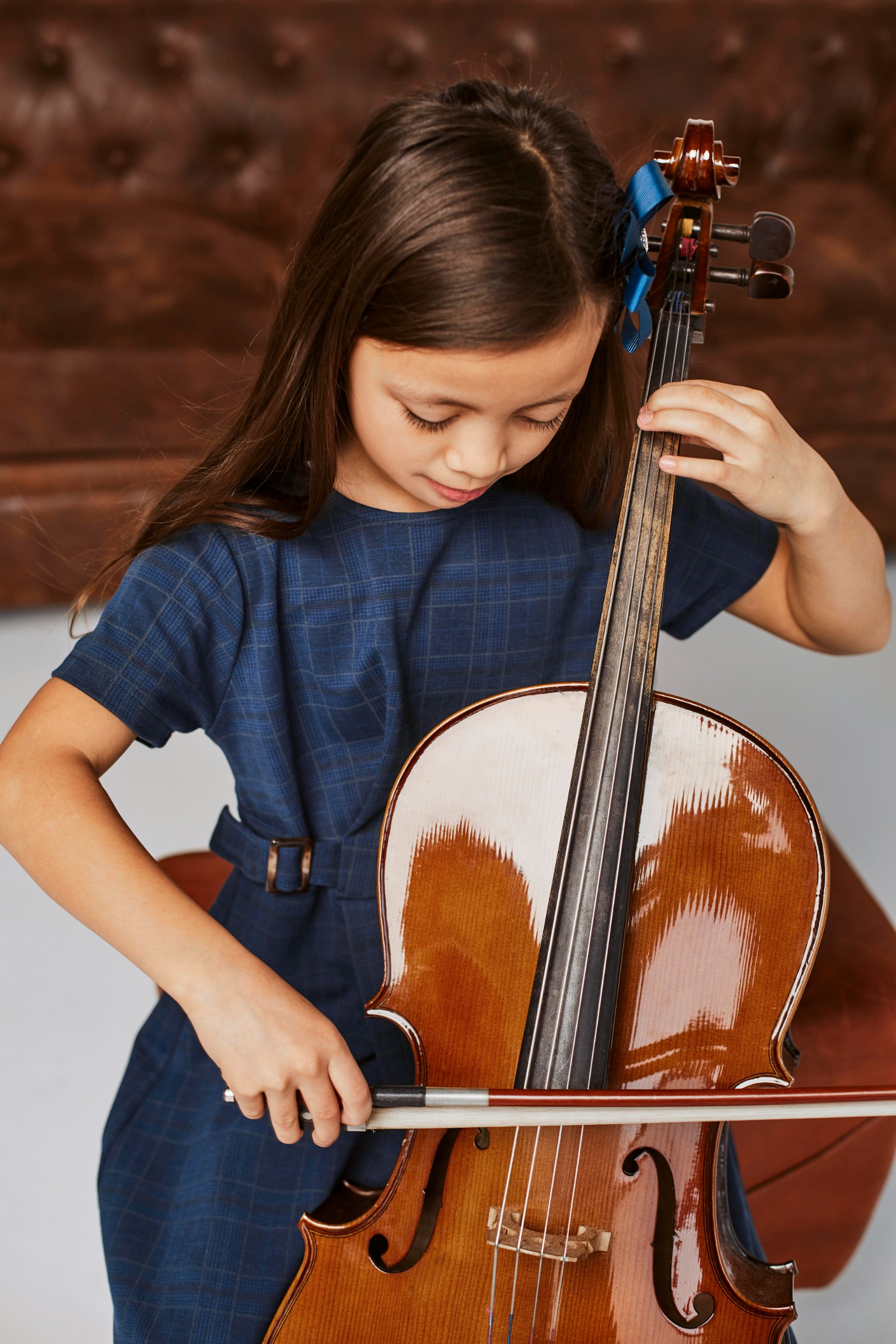
Social/Emotional Milestones
- Sings, dances, or acts for you
- Follow rules or takes turns when playing games with other children
- Does simple chores at home, like matching socks or clearing the table after eating
Language/Communication Milestones
- Tells a story she heard or made up with at least two events. For example, a cat was stuck in a tree and a firefighter saved it
- Answers simple questions about a book or story after you read or tell it to him
- Keeps a conversation going with more than three back-and-forth exchanges
- Uses or recognizes simple rhymes (bat-cat, ball-tall)
Cognitive (Thinking, Learning, Problem-Solving) Milestones
- Counts to 10
- Name some numbers between 1 and 5 when you point to them
- Uses words about time, like “yesterday”, “tomorrow”, “morning”, or “night”
- Writes some letters in her name
- Names some letters when you point to them
- Pays attention for 5 to 10 minutes during activities. I.e during story time or making arts and craft (screen time does not count)
Movement/Physical Development Milestones
- Buttons some buttons
- hopes on one foot
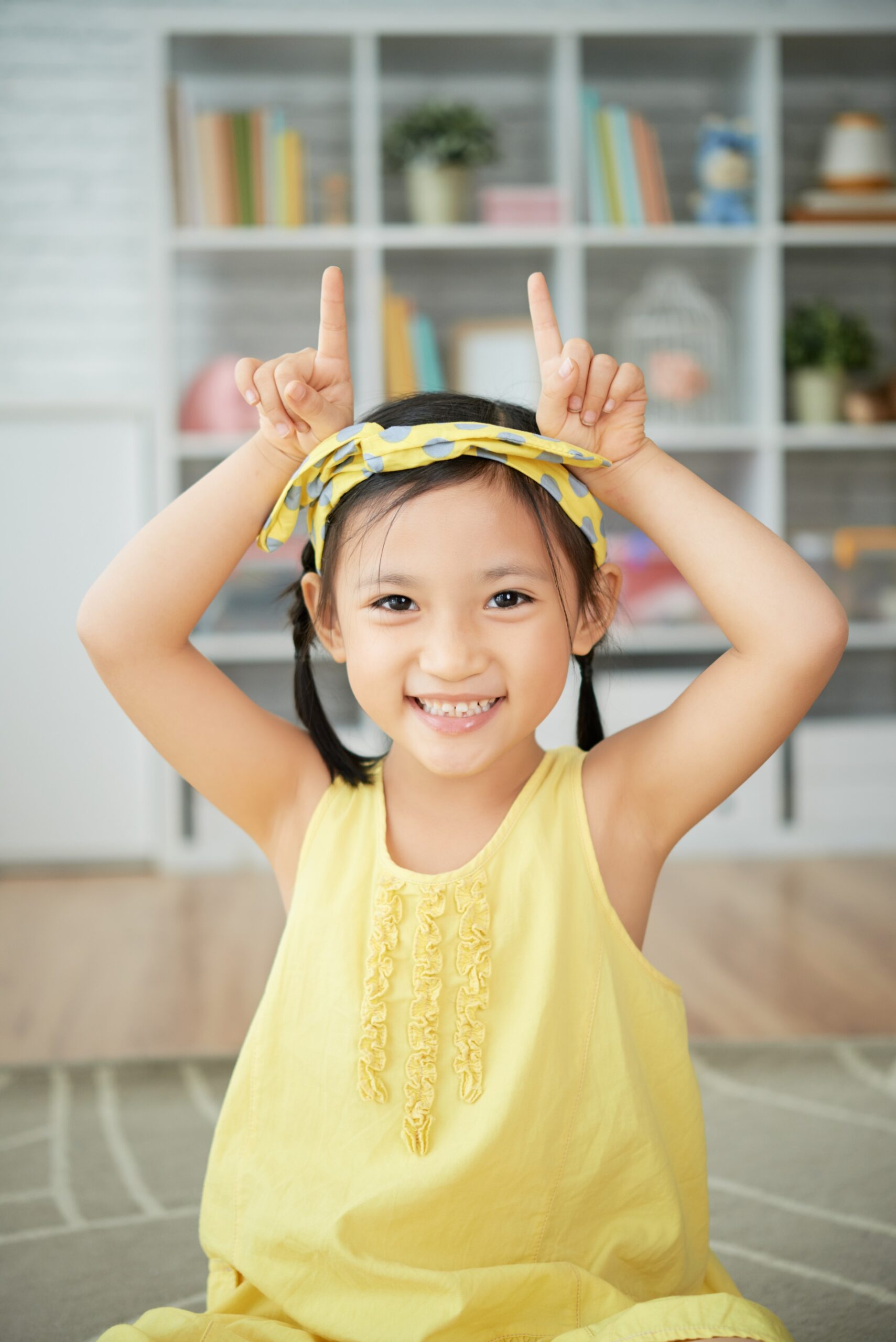
Social/Emotional Milestones
- Begins to smile responsively at people (social smile)
- Can briefly calm themselves (e.g., sucking on hands)
- Works well in groups, shares, and takes turns during play or activities.
- Shows increasing independence in daily tasks, such as dressing and making simple choices.
Language/Communication Milestones
- The child uses words like “excited,” “disappointed,” and “curious” in conversations, showing an understanding of different emotions.
- When telling a story, the child says, “Yesterday, I went to the park, and I saw a dog that was really big and fluffy.”
- The child can successfully follow a three-step instruction, such as “Please go to your room, get your backpack, and bring it back here.”
- During a conversation, the child asks, “Can we go to the zoo tomorrow?” and responds appropriately to a friend’s comments about animals.
Cognitive (Thinking, Learning, Problem-Solving) Milestones
- The child can solve simple addition problems like “What is 3 + 2?” and can count objects up to 100, such as counting blocks.
- When faced with a puzzle, the child thinks aloud, “If I put this piece here, it fits better,” demonstrating logical thinking.
- After listening to a short story, the child can recall key details, such as characters and events, and retell it in their own words.
- The child asks questions like, “Why do trees lose their leaves?” and shows interest in learning about nature during a walk.
Movement/Physical Development Milestones
- The child confidently rides a two-wheeler without training wheels and can jump over small objects or puddles with ease.
- The child can cut out shapes from paper using scissors and write their name neatly, with letters spaced correctly.
- The child participates in a soccer game, understanding the basic rules and working as part of a team to score goals.
- The child can balance on one foot for several seconds and can skip rope with some success, showing improved coordination.
